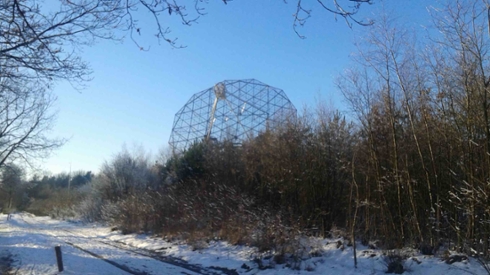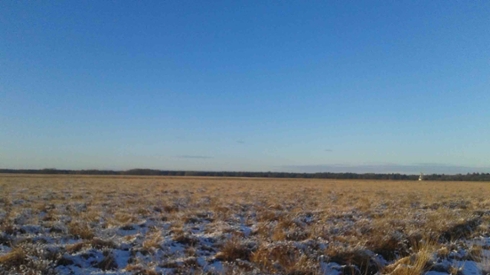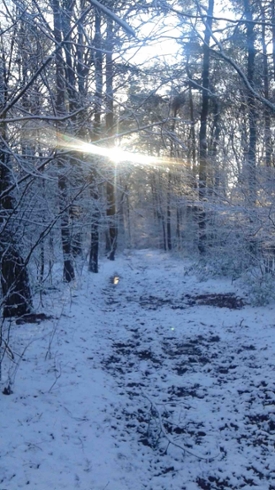ASTRON Institute: Irene Globus-Harris, Winter Fellowship for International Travel

Westerbork
Irene Globus-Harris, sophomore physics major and recipient of the Winter Fellowship for International Travel, reflects on her time in Dwingeloo, the Netherlands, at ASTRON, the Netherlands Institute for Radio Astronomy.
++++++++++++++
The Dutch national color is orange. Bright orange, the type that hurts your eyes after staring at it too long. As I flew in at the break of dawn, the entire sky—awash in an intense, orange sunrise—seemed to reflect that fact. I spent the first few days visiting my host family and friends in North Holland, then headed to Dwingeloo to begin my work at ASTRON. Dwingeloo is small—more of a village than a town, and is adjacent to one of the Netherlands’ largest national parks, the Dwingelderveld. ASTRON itself sits within that national park which made the bike ride in exceptionally beautiful.
 That said, biking in general proved more difficult than expected. On my first day of work, we got snow, then that evening, ice. Snow isn’t unusual in Dwingeloo, but the black ice—so thick that you could skate on the roads—was. The ice made commuting to ASTRON impossible for most people, so my first week was very quiet. Luckily, the ice cleared on Friday so I was able to begin my data reduction.
That said, biking in general proved more difficult than expected. On my first day of work, we got snow, then that evening, ice. Snow isn’t unusual in Dwingeloo, but the black ice—so thick that you could skate on the roads—was. The ice made commuting to ASTRON impossible for most people, so my first week was very quiet. Luckily, the ice cleared on Friday so I was able to begin my data reduction.
What comes to many peoples’ minds when they think about astronomy probably involves something akin to what a pirate might use. Modern astronomy is a bit different. Radio astronomy, as the name implies, uses the radio-wave spectrum rather than visible light, which can paint a very different picture of the universe. For my work, the 21 cm emission line of hydrogen caused by its change in energy states can give information about the composition of a galaxy far beyond its normally visible regions and into the outer radii composed of dark matter. Rather than peering into a long telescope, radio astronomers use long arrays of antennas that act together as one massive telescope. The signals of the individual antennas are combined and analyzed with interferometry, giving a much higher resolution image.
The Westerbork Synthesis Radio Telescope uses this technique, and is interesting both in its use of the technology and in the history of its construction. As ASTRON’s location in the Dwingelderveld made it not ideal for such a large antenna array, they had to find a different space for the telescope. Westerbork had the space, but its name had a very different association: the Westerbork Transit Camp from World War II saw the shipment of 105,000 Dutch and German Jews and Romani people to their deaths in Poland. Following the war, the space was used to house refugees from Indonesia during the Indonesian War of Independence. The telescope is constructed on the part of the camp that is not maintained as a memorial center, in between pre-historic burial mounds.

My work at ASTRON used raw data that had been collected from the telescope several years ago, so I didn’t observe with the telescope itself while visiting. Instead, my work with Prof. Tom Oosterloo mainly centered on taking the raw data on a specific galaxy, and reconstructing a cleaned and calibrated “data cube” so that I could obtain information about the HI’s rotational velocity at different radii. I had an incredible time learning interferometry and data reduction techniques; the entire astronomy group at ASTRON was extremely welcoming and so clearly passionate about their work. The group is fairly international, so everyone spoke English at work—a good thing for me as my Dutch astronomy vocabulary is limited.
Outside of my work, I had a wonderful time being back in the Netherlands. While the weather made it impossible for me to travel as much as I had initially hoped on the two weekends I was in Dwingeloo, just walking and biking around Dwingeloo and Dwingelderveld was pretty extraordinary. I lived in a small “guest house” on a farm right outside of the Dwingelderveld, which was an exceptional place to spend three weeks. My return trip was not so beautiful as the flight in; a terrorist threat left the plane sitting on the tarmac for a couple of hours. We were eventually cleared to leave, but the subsequent flight was a bit anxiety inducing. Luckily, everything went smoothly, and I arrived back in the United States just in time for classes to start.

Photos: Top Right: ASTRON, Middle left: ASTRON from the Dwingelderveld, Bottom Center, Biking to Work
Tags: winter fellowship, winter fellowship for international travel, international travel, astronomy, radio, science, netherlands
